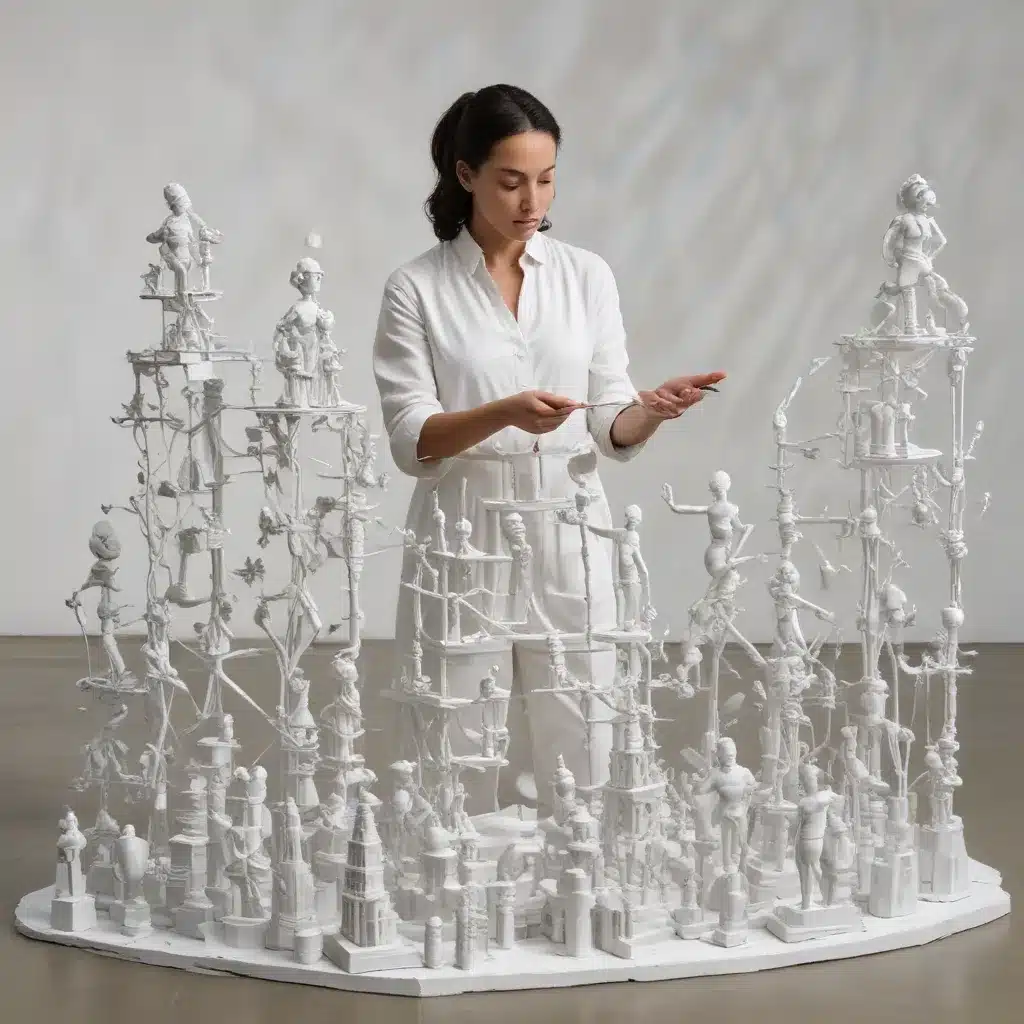
The art world has witnessed a remarkable shift in the past century, as the conceptual revolution has profoundly altered the very nature of artistic expression. Conceptual art, a movement that emerged in the 1960s, challenged the traditional notions of art, prioritizing ideas over physical form and redefining the role of the artist. This transformative approach has left an indelible mark on the art landscape, inspiring subsequent generations of artists to explore the boundless possibilities of the intangible.
Defining Conceptual Art
At its core, conceptual art emphasizes the primacy of the concept or idea over the physical artwork itself. Rather than focusing on the craftsmanship or aesthetic qualities of a work, conceptual artists were concerned with conveying a specific message, thought, or experience. This radical shift away from the traditional emphasis on visual appeal and technical mastery opened up new avenues for artistic expression.
Challenging Traditional Notions of Art
The conceptual revolution challenged the conventional understanding of what constitutes art. By moving beyond the traditional mediums of painting and sculpture, conceptual artists explored a wide range of unconventional materials, actions, and ephemeral experiences. This dematerialization of the artwork disrupted the notion of art as a tangible object and invited the audience to engage with the work on a conceptual level.
Intangible Artistic Expressions
Conceptual art often manifested in the form of installations, performances, conceptual photographs, and even language-based works. These intangible expressions prioritized the communication of ideas over the creation of a physical artifact. Artists employed a diverse range of strategies, from appropriating found objects to orchestrating participatory experiences, to convey their conceptual intentions.
Transformative Impact on Artistic Practices
The conceptual revolution profoundly influenced the way artists approached their craft. Rather than focusing on technical mastery, conceptual artists shifted their attention to the creative process, the conceptual underpinnings, and the contextual framework of their work. This emphasis on the conceptual dimension transformed the role of the artist, who became more of a conceptual thinker and idea generator than a traditional craftsperson.
Conceptual Art and Social Engagement
Conceptual art often served as a platform for addressing contemporary social, political, and cultural issues. By using art as a medium for critical discourse, conceptual artists engaged the public in meaningful dialogues about pressing concerns. This socially engaged approach to art-making challenged the notion of art as a purely aesthetic or decorative pursuit, positioning it as a powerful tool for social change.
Philosophical Underpinnings of Conceptual Art
The conceptual revolution was informed by a range of philosophical ideas, including postmodernism, phenomenology, and structuralism. These theoretical frameworks questioned the nature of art, the role of the artist, and the relationship between the artwork and the audience. Conceptual artists often drew inspiration from these philosophical perspectives, incorporating elements of deconstruction, subjectivity, and language-based analysis into their work.
Technological Advancements and Conceptual Art
The rise of new technologies, such as video, photography, and digital media, provided conceptual artists with a vast array of tools to explore and expand the boundaries of artistic expression. These technological advancements enabled conceptual artists to create works that were ephemeral, interactive, and multimedia-based, further challenging the traditional definitions of art.
Conceptual Art and the Art Market
The conceptual revolution also had a significant impact on the art market. The emphasis on ideas over physical objects, as well as the dematerialization of the artwork, posed challenges to the traditional modes of art production, distribution, and valuation. Conceptual artists often explored alternative modes of art-making and exhibition, such as artist-run spaces and institutional critique, which disrupted the established structures of the art world.
Preservation and Documentation of Conceptual Art
The ephemeral and immaterial nature of conceptual art presented unique challenges for preservation and documentation. Conceptual artists often relied on various forms of documentation, such as photographs, videos, and written instructions, to capture the essence of their work. This shift in the nature of the artwork necessitated the development of innovative approaches to archiving and conserving conceptual art practices.
The Legacy of Conceptual Art
The conceptual revolution has had a lasting impact on the art world, influencing subsequent art movements and continuing to shape contemporary artistic practices. Postminimalism, installation art, performance art, and relational aesthetics are just a few examples of artistic approaches that have been informed by the conceptual revolution. The legacy of conceptual art continues to inspire artists to push the boundaries of what art can be and to engage with the intangible realms of ideas, experiences, and social transformation.
Conceptual Art and Interdisciplinary Collaboration
Conceptual art has also fostered a growing interest in interdisciplinary collaboration, as artists have sought to incorporate insights from fields such as philosophy, science, and technology into their work. These cross-disciplinary dialogues have resulted in innovative approaches to art-making and have expanded the conceptual and practical possibilities of the artistic practice.
Conceptual Art and Global Perspectives
The conceptual revolution has had a global impact, with artists from diverse cultural backgrounds interpreting and manifesting conceptual art in unique ways. This cultural diversity has enriched the conceptual art landscape, reflecting the varied perspectives, social contexts, and artistic traditions that shape the global art scene.
Pedagogical Implications of Conceptual Art
The conceptual revolution has also had significant implications for art education. The emphasis on critical thinking, problem-solving, and interdisciplinary exploration in conceptual art has inspired educators to rethink traditional art curricula and to foster the development of these essential skills in their students. This approach has the potential to cultivate a new generation of artists and thinkers who are equipped to navigate the complexities of the contemporary world.
The conceptual revolution has undoubtedly left an indelible mark on the art world, challenging traditional notions of art and inspiring a new generation of artists to explore the intangible realms of ideas, experiences, and social transformation. As the conceptual revolution continues to evolve, its impact on artistic practices, the art market, and the broader cultural landscape promises to be ever-expanding and profoundly influential.